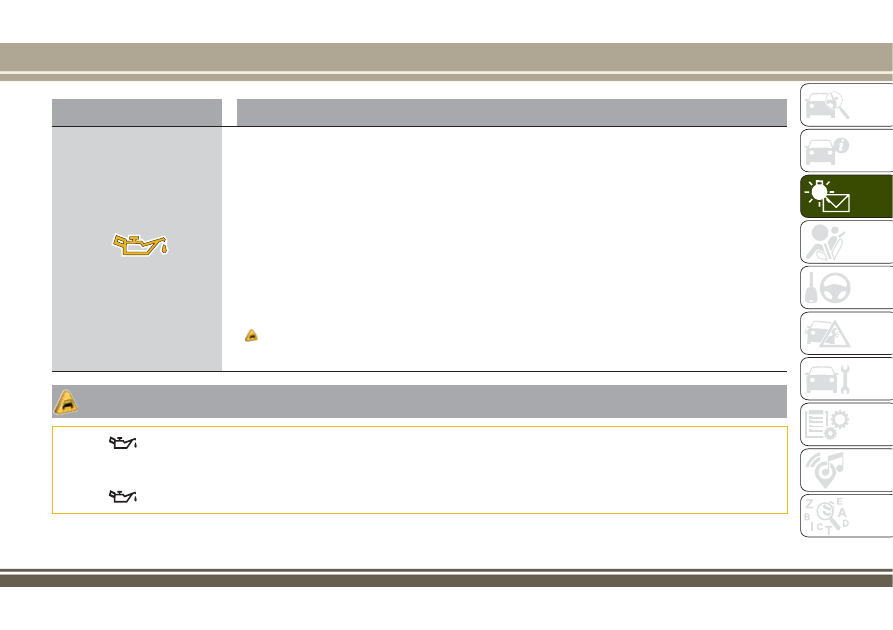Jeep Renegade (2018 year). Instruction - part 6

Symbol
What it means
ENGINE OIL DETERIORATED
(where provided)
Diesel versions: the symbol is displayed on some versions, along with a dedicated message displaying.
The symbol is displayed for 3 minute cycles and intervals of 5 seconds until oil is changed. The symbol
is displayed until the problem is solved.
Petrol versions: the symbol switches on and then is not displayed when the display cycle is completed.
IMPORTANT After the first indication, each time the engine is started the symbol will continue to
switch on as described above until the oil is changed. On certain versions a dedicated message is
displayed.
If the symbol flashes, this does not mean that there is a fault on the vehicle, rather it simply reports
that it is now necessary to change the oil as a result of regular use of the vehicle. The deterioration of
engine oil is accelerated by using the car for short drives, preventing the engine from reaching
operating temperature.
Contact a Jeep Dealership as soon as possible.
IMPORTANT
30) If the
warning light comes on, the exhausted engine oil should be changed as soon as possible, never drive more than 500 km
from the first switching-on of this warning light. Failure to observe the above may result in severe damage to the engine and invalidate the
warranty. Remember that when this warning light comes on, it does not mean that the level of engine oil is low, so if it flashes you do not
need to top up the engine oil.
31) If the
warning light flashes when driving, contact a Jeep Dealership.
93
30) 31)